Table of contents
Intro
There has been some confusion around the difference between Recurring Items and Rules in Lunch Money. My goal today is to clear up some of that confusion and lay out some best practices for using these features. Some of these concepts are just my opinion, and I'll try to differentiate between "my best practices" and "general best practices". I'll also explain my justification for why I think something should be the way it is.
What is a Rule in Lunch Money?
Pro-Tip
Set a priority of **1** on rules that you've manually created or updated. This will help you distinguish them from auto-generated rules and also gives them priority above those auto-generated rules should both of them match a transaction!
Pro-Tip
Set a priority of **1** on rules that you've manually created or updated. This will help you distinguish them from auto-generated rules and also gives them priority above those auto-generated rules should both of them match a transaction!
The manually-added transaction below, will match our newly-created rule and apply the rule's actions to it.
This transaction was automatically matched and adjusted according to our rule:
What is a Recurring Item in Lunch Money?
Recurring items in Lunch Money are a way of identifying a transaction that is expected to recur on some sort of regular basis. These items can recur on the following intervals:
- Once a week
- Twice a month
- Every 2 weeks
- Monthly
- Every 2 months
- Every 3 months
- Every 4 months
- Twice a year
- Yearly
In my experience, monthly and yearly are the most common, although certain things like paychecks may fall into the "twice a month" category.
The primary purpose of Recurring Items in Lunch Money is to help in budget planning. When you add a monthly-recurring item, Lunch Money will inform you to pad the corresponding category in your budget.
For example, see the following Recurring Item, and the budget planning hint:

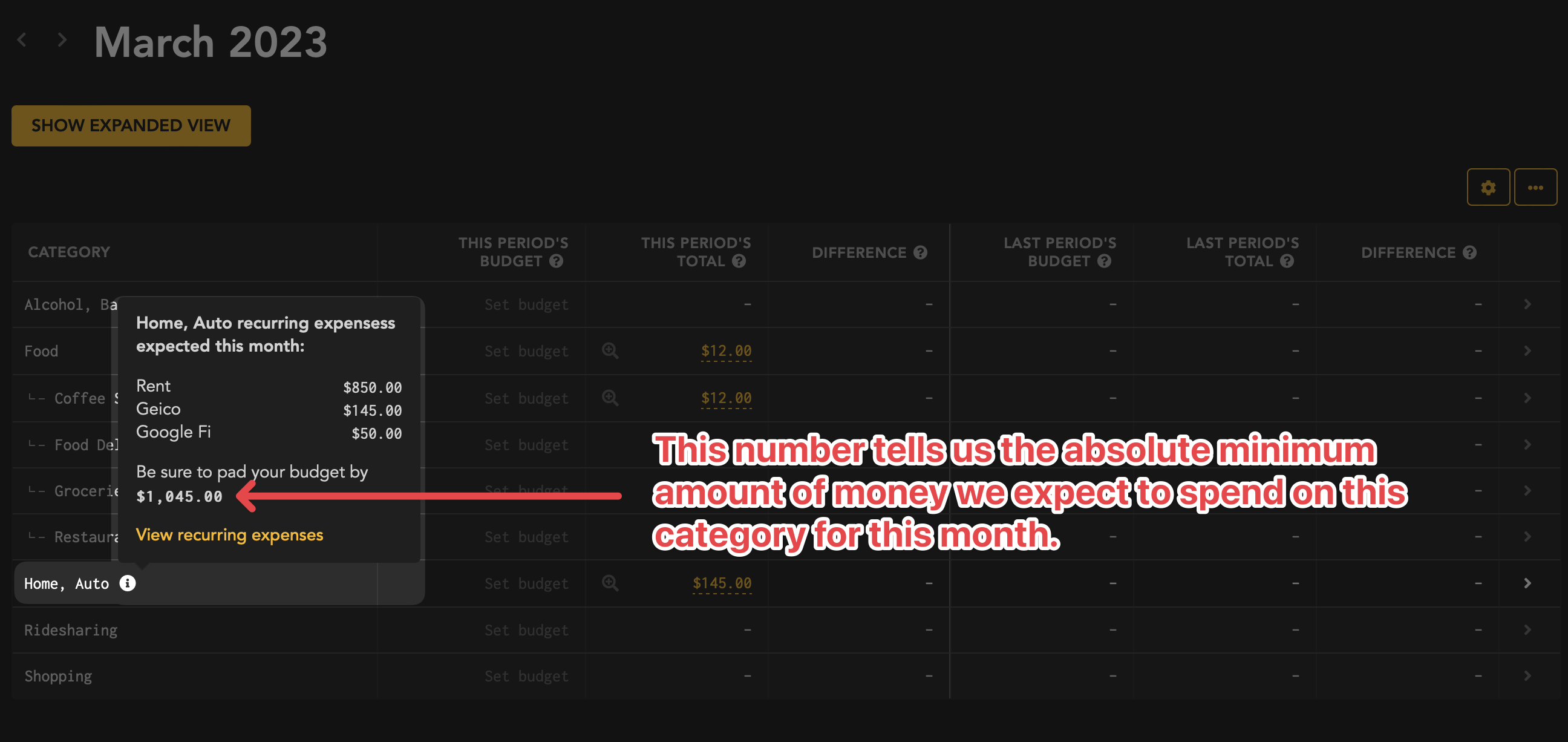
Note that this tool becomes very powerful if you have annually-recurring large-ticket expenses that otherwise might sneak up on you.
For example, consider a yearly subscription for a security service. Let's add that to our "Home, Auto" budget from the example above.

And then our budget planning hint will include that yearly cost in our monthly planning.
This is a great way to avoid letting those yearly expenses sneak up on you!
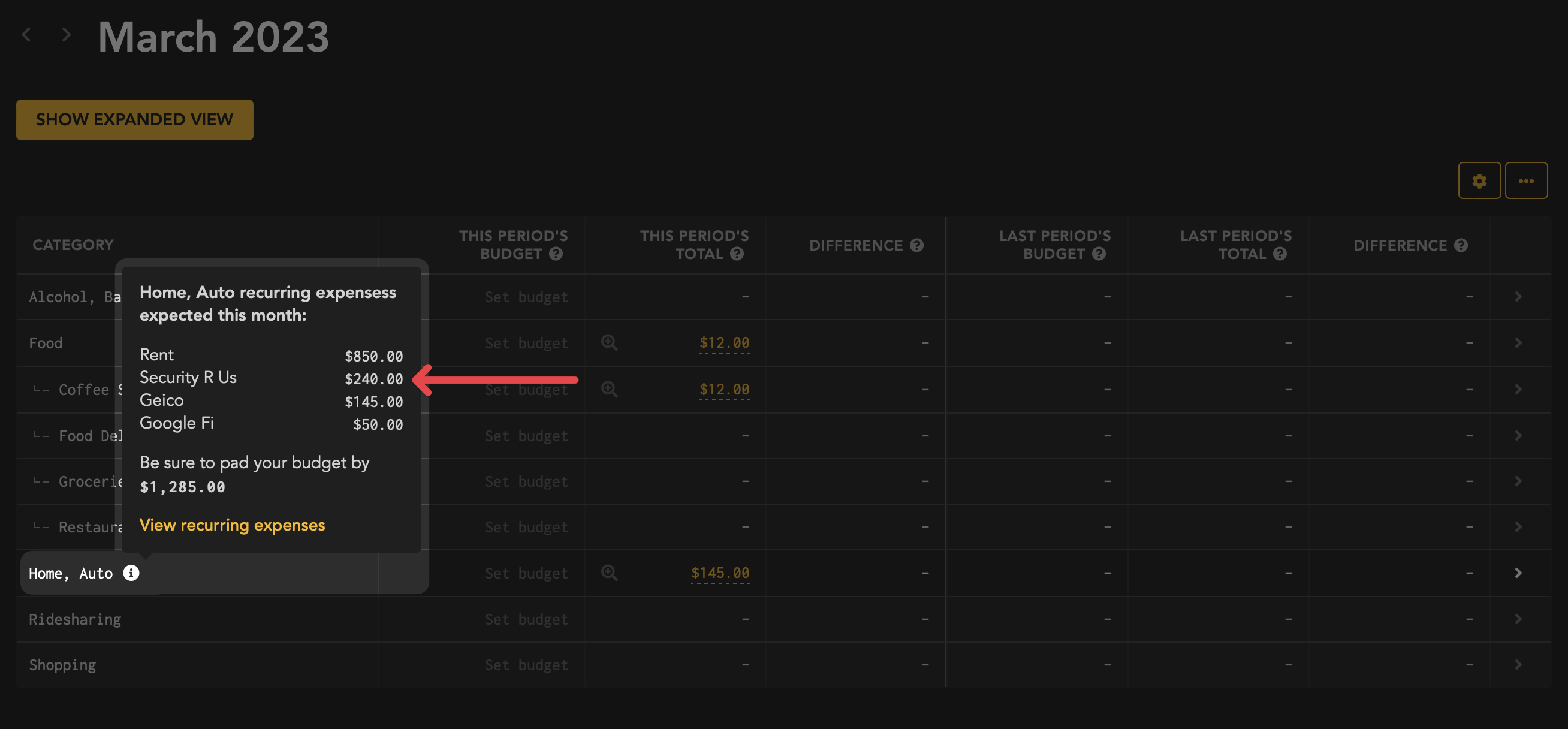
And of course, since this is a yearly expense, our April budget will not include that expense:
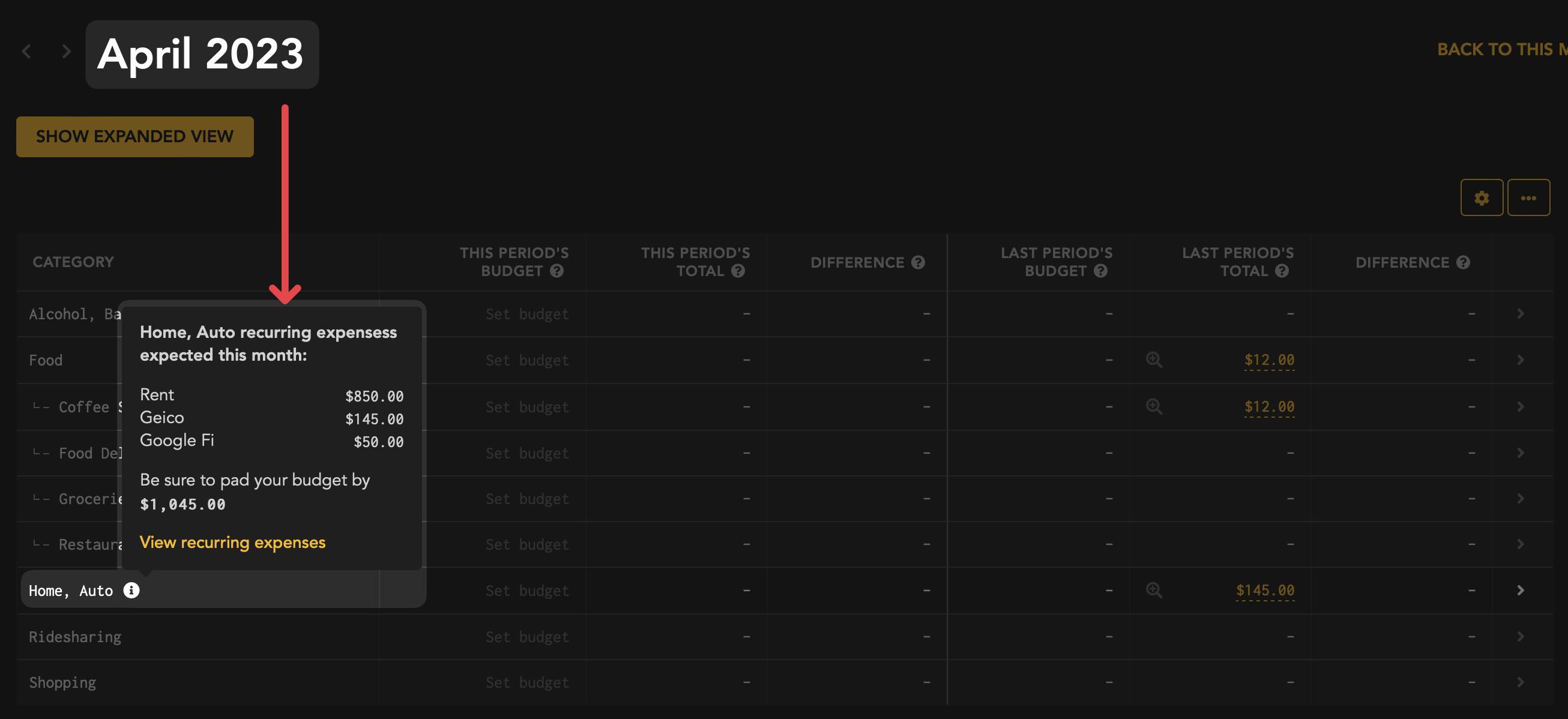
How can I modify a Recurring Item?
Modifying Recurring Items has been a topic of discussion on the Lunch Money Slack. It can be a bit confusing to understand what is the domain of the Recurring Item and what is the domain of the Rule.
Wait
I hear you say,
I want to modify a Recurring Item, not a rule!
This is the tricky bit: Recurring Items are powered by rules. A Recurring Item matches transactions with a set of criteria and then binds them to the Recurring Item. The conditions for when a transaction is a Recurring Item, are dictated by its rule.
Let's look at an example.
Here's the rule created from that security service Recurring Item:

Note a few key things here:
The rule has been created to only match transactions within a few days of the expected date. This typically prevents false positives where a transaction at a different point in the month matches based on the amount.
The rule has been created to match the exact amount as specified in the Recurring Item
The rule's only action is to link the transaction to the Recurring Item, which will set the payee, category, and notes (if applicable).
The important thing to take away is that the rule is created by the creation of the Recurring Item.
️Important
- If you want to change future Recurring Item payees, categories, or notes, you must update the Recurring Item! - If you want to change which transactions the Recurring Item will match, you must update the rule!Let's look at another example here.
Here I've added a transaction that matches the rule for our security service.
Note that the payee comes from the merchant, the category comes from the Recurring Item category, and the notes come from the Recurring Item description.
Also note how none of those changes are applied from the rule.
The rule only told the Recurring Item which transaction it should match, if any.
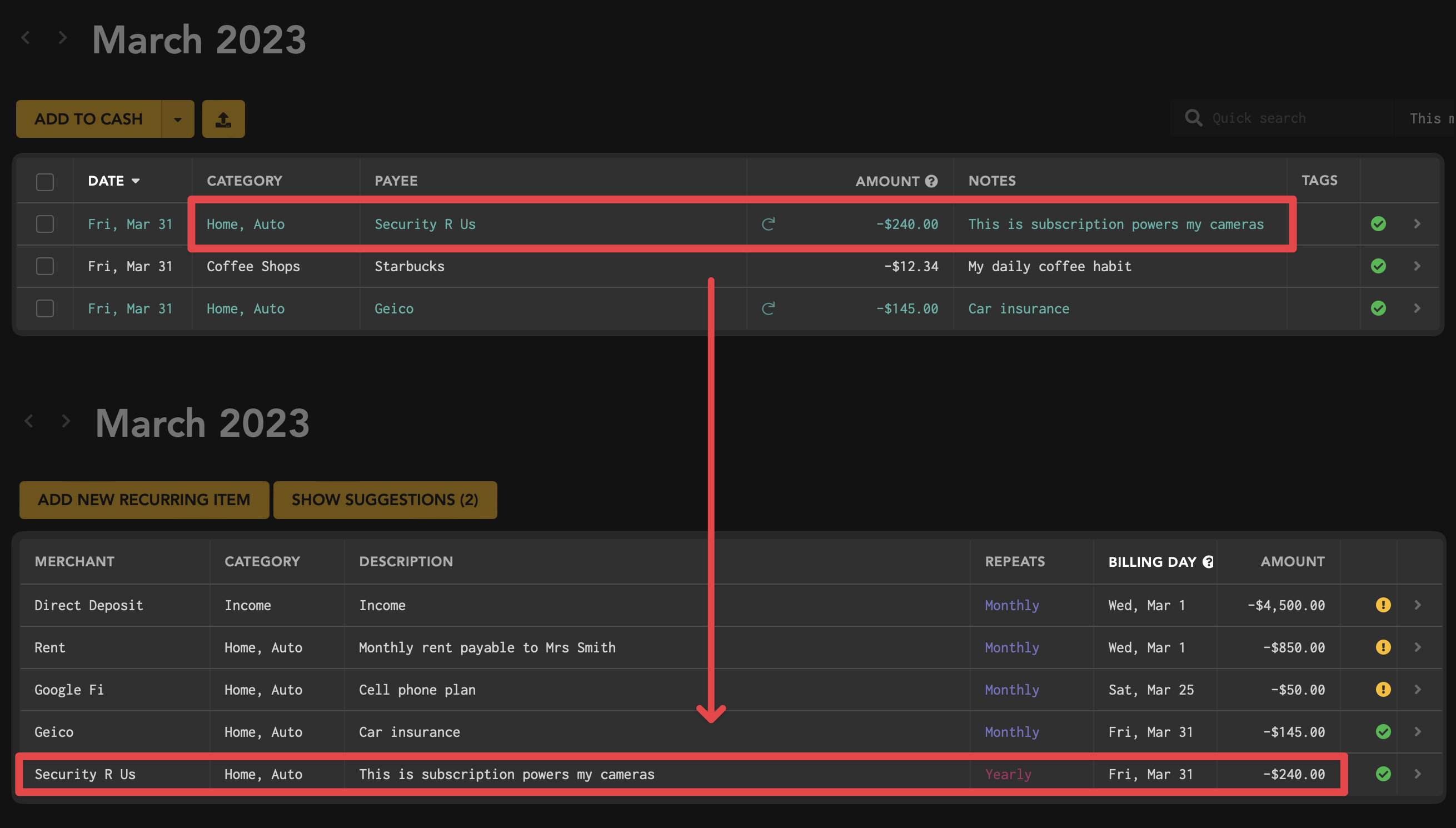
What if my Recurring Item changes price?
If your Recurring Item changes price, there's a couple ways you can handle it based on the context of the situation.
If the price changes and the subscription is roughly the same item, you can just update the rule, which will update your Recurring Item.
If the price changes and the underlying item is a bit different, you may wish to create a new Recurring Item and end the current one.
If the price changes and you wish to maintain a historical record of the price change, you'll want to create a new Recurring Item and end the current one.
With steps 2 and 3, you're basically good to go with no real weirdness. However, do note that all Recurring Items show up when building out rules, even Recurring Items that are no longer active!
The real trouble comes when you want to adjust an existing Recurring Item's rule. If you update a Recurring Item's matching amount, it will work as expected for future transactions. But, the UI will not update the rule's amount to match the Recurring Item's amount.
Look at the following image where I changed the rule's matching amount to $100, and then created a new matching transaction.
Note that the transaction is properly matched and updated. However, note that the Recurring Item will forever and always match the original amount.
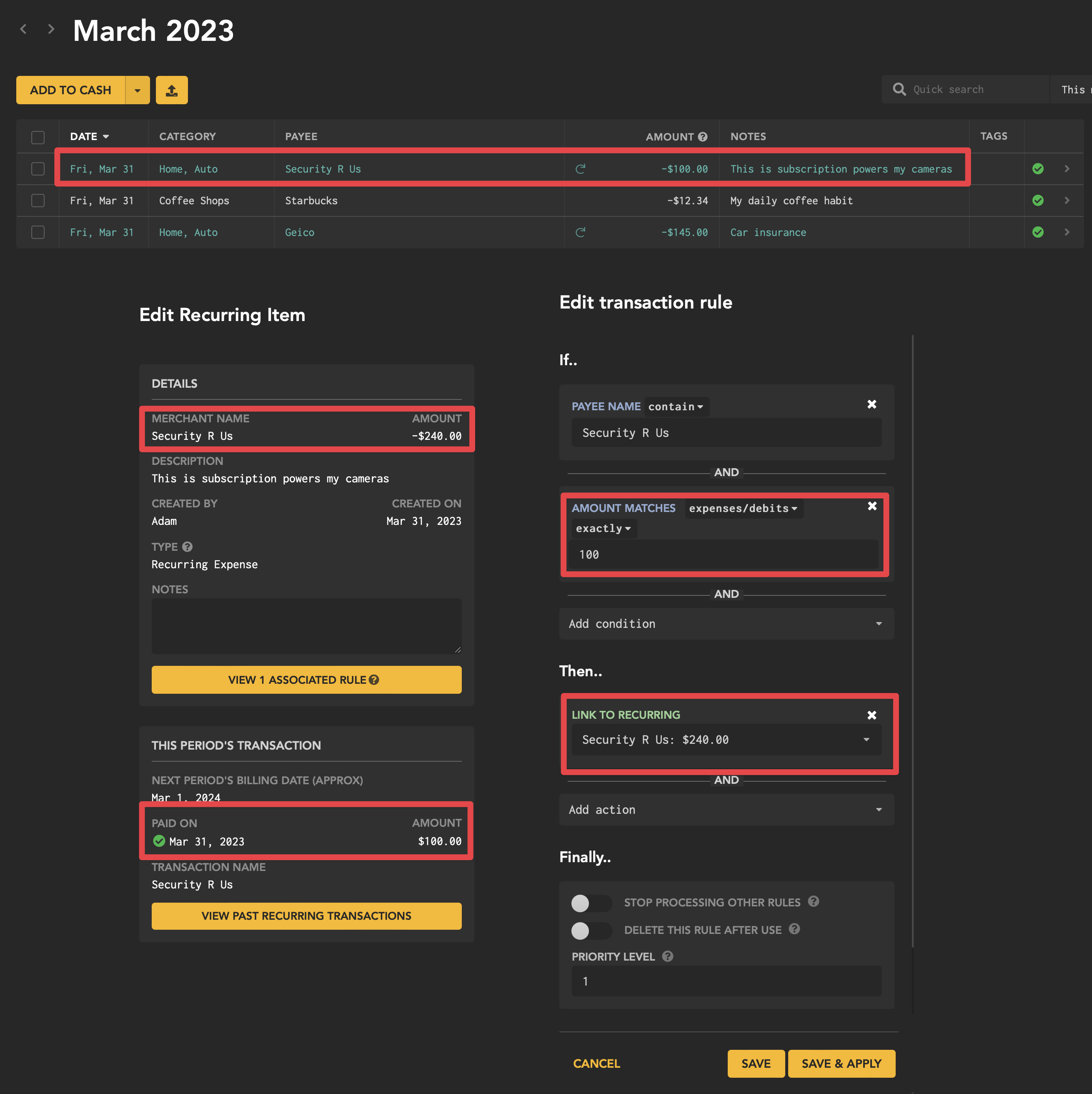
I want to stress here that the matching auto-categorization will continue to work as expected. It's just the Recurring Item that is not update to reflect the latest amount.
Important
It's for this reason I recommend always creating new Recurring Transactions and never updating the rule by itself.